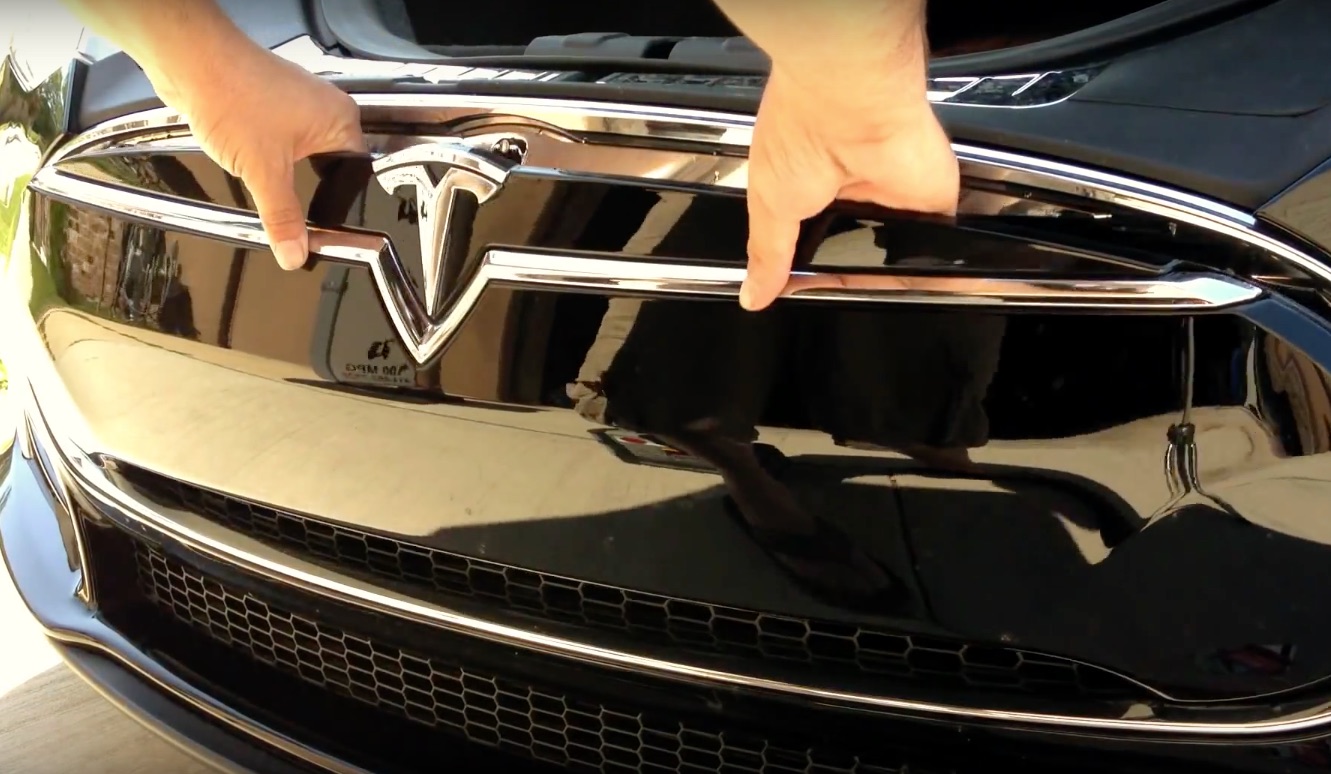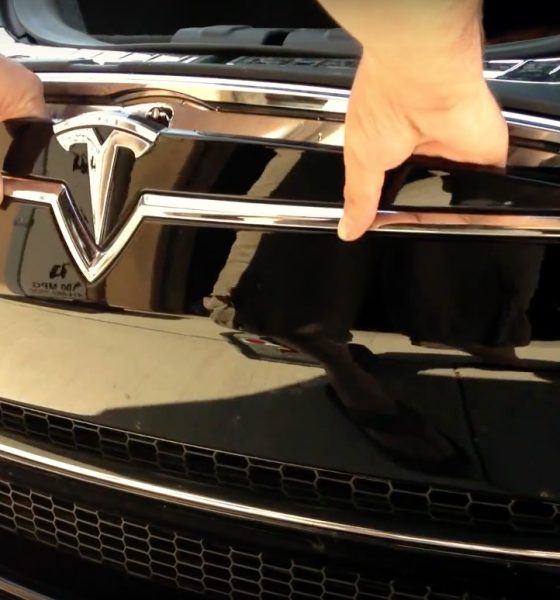

News
Why Tesla’s lead acid 12V battery needs to be lithium-ion based
It’s a prominent issue surrounding the electric vehicle market that the old-school lead acid battery just isn’t appropriate for new technology vehicles. Many users of electric vehicles, especially Tesla owners, have cited concerns with the poor performance of their 12V or low-voltage battery, oftentimes requiring annual replacement.
In contrast, a lead acid battery in a traditional internal combustion engine (ICE) vehicle generally has a 4 year life-cycle, but why?
RELATED: Tesla Model S 12V Lithium-Ion battery replacement (up to 70% lighter, 4x life)
First off, some of the most important factors to consider in longevity of a battery are “cycle-life”, environmental conditions, discharge/charge rates and calendar-life; cycle-life is how many times the battery can be drained and recharged in its life. Environmental conditions include temperature and humidity. Discharge/charge rates are the amperages going out of and into the battery respectively.
There are two major differences between the way an ICE vehicle uses its 12V battery and the way an EV uses its 12V battery:
“OFF” state discharge and cycling frequency
ICE Vehicle: generally has a very low 12V load while the vehicle is in the “off” state, often this load doesn’t exceed a few watts and doesn’t present a major challenge for the 12V battery to maintain.
Electric Vehicle: The 12V load while in the off-state is often much higher due to advanced computer systems that are running to maintain the high-voltage battery, keep vehicle “connected” (all EV have some remote access features), maintain charging and BMS (Battery Management System) communications, etc. In fact a Tesla Model S/X puts about 50 Watts of load on the 12V system when the vehicle is in the “off” state. 50 Watts equals about 4.5 Amps of discharge on the 12V battery, this drains the battery down relatively rapidly and requires the 12V battery be “recharged” by the high-voltage battery regularly, this usage pattern results in many cycles being placed on the battery.
“ON” state utilization and purpose
ICE Vehicle: The 12V battery is used to initiate the ICE (start the car) and is designed for putting out large amounts of current to accommodate this process. Once an ICE vehicle is in the “on” state, it relies on an alternator to power all of the 12V sub-systems and also maintain the voltage of the 12V battery.
Electric Vehicle: The 12V is subjected to (practically) no additional load while the vehicle is being turned “on”, and although most vehicles are designed with DC/DC converters (which act as alternators) it is often an engineering design choice to reduce load on the DC/DC converter by minimizing the frequency with which it is utilized. This also extends the driving range of the vehicle because none of the precious high-voltage battery capacity is being shunted to non-driving tasks. Due to this usage profile the 12V battery is subjected to relatively low discharge and recharge currents.
When you combine the high number of cycles and the low current requirements of the electric vehicle 12V battery system you arrive at a completely different battery need than that of an ICE vehicle. Lead Acid batteries are very good at high discharge and low cycle count life-styles, this is their bread and butter and this is where they last a long time and provide the most bang for the buck (cheap cost and decent product life-cycle), but they aren’t lasting in electric vehicles.
The electric vehicle 12V battery system is one that is best suited by a battery capable of tremendous cycle-life as the main design goal. The battery chemistry that suits this usage scenario best? Lithium! Lithium battery technology is specifically very good at being cycled many times and continuing to provide minimal capacity loss and degradation. This, along with reduced weight, is why these batteries are used for the high-voltage battery packs, cell-phones, laptops, medical equipment and cars where batteries are being cycled frequently and longevity is important.
Editor’s note: This post was submitted into our network by Tesla Model S owner Sean Scherer. Having suffered an unfortunate incident in his Model S that left him stranded because of a faulty 12V battery, Sherer began on a mission to create a lithium-ion based 12V battery solution that was not only more reliable than the traditional lead acid battery, but better suited for the demands of a Tesla Model S, Model X, and electric vehicles in general. He began BattMobile Batteries, who have made it their mission to improve adoption of electric vehicles by solving some of the small details that has been missed by EV manufacturers.
We’ve also included a video tutorial on how to replace the Model S 12V battery.

News
Tesla FSD fleet is nearing 7 billion total miles, including 2.5 billion city miles
As can be seen on Tesla’s official FSD webpage, vehicles equipped with the system have now navigated over 6.99 billion miles.

Tesla’s Full Self-Driving (Supervised) fleet is closing in on almost 7 billion total miles driven, as per data posted by the company on its official FSD webpage.
These figures hint at the massive scale of data fueling Tesla’s rapid FSD improvements, which have been quite notable as of late.
FSD mileage milestones
As can be seen on Tesla’s official FSD webpage, vehicles equipped with the system have now navigated over 6.99 billion miles. Tesla owner and avid FSD tester Whole Mars Catalog also shared a screenshot indicating that from the nearly 7 billion miles traveled by the FSD fleet, more than 2.5 billion miles were driven inside cities.
City miles are particularly valuable for complex urban scenarios like unprotected turns, pedestrian interactions, and traffic lights. This is also the difference-maker for FSD, as only complex solutions, such as Waymo’s self-driving taxis, operate similarly on inner-city streets. And even then, incidents such as the San Francisco blackouts have proven challenging for sensor-rich vehicles like Waymos.
Tesla’s data edge
Tesla has a number of advantages in the autonomous vehicle sector, one of which is the size of its fleet and the number of vehicles training FSD on real-world roads. Tesla’s nearly 7 billion FSD miles then allow the company to roll out updates that make its vehicles behave like they are being driven by experienced drivers, even if they are operating on their own.
So notable are Tesla’s improvements to FSD that NVIDIA Director of Robotics Jim Fan, after experiencing FSD v14, noted that the system is the first AI that passes what he described as a “Physical Turing Test.”
“Despite knowing exactly how robot learning works, I still find it magical watching the steering wheel turn by itself. First it feels surreal, next it becomes routine. Then, like the smartphone, taking it away actively hurts. This is how humanity gets rewired and glued to god-like technologies,” Fan wrote in a post on X.
News
Tesla starts showing how FSD will change lives in Europe
Local officials tested the system on narrow country roads and were impressed by FSD’s smooth, human-like driving, with some calling the service a game-changer for everyday life in areas that are far from urban centers.

Tesla has launched Europe’s first public shuttle service using Full Self-Driving (Supervised) in the rural Eifelkreis Bitburg-Prüm region of Germany, demonstrating how the technology can restore independence and mobility for people who struggle with limited transport options.
Local officials tested the system on narrow country roads and were impressed by FSD’s smooth, human-like driving, with some calling the service a game-changer for everyday life in areas that are far from urban centers.
Officials see real impact on rural residents
Arzfeld Mayor Johannes Kuhl and District Administrator Andreas Kruppert personally tested the Tesla shuttle service. This allowed them to see just how well FSD navigated winding lanes and rural roads confidently. Kruppert said, “Autonomous driving sounds like science fiction to many, but we simply see here that it works totally well in rural regions too.” Kuhl, for his part, also noted that FSD “feels like a very experienced driver.”
The pilot complements the area’s “Citizen Bus” program, which provides on-demand rides for elderly residents who can no longer drive themselves. Tesla Europe shared a video of a demonstration of the service, highlighting how FSD gives people their freedom back, even in places where public transport is not as prevalent.
What the Ministry for Economic Affairs and Transport says
Rhineland-Palatinate’s Minister Daniela Schmitt supported the project, praising the collaboration that made this “first of its kind in Europe” possible. As per the ministry, the rural rollout for the service shows FSD’s potential beyond major cities, and it delivers tangible benefits like grocery runs, doctor visits, and social connections for isolated residents.
“Reliable and flexible mobility is especially vital in rural areas. With the launch of a shuttle service using self-driving vehicles (FSD supervised) by Tesla in the Eifelkreis Bitburg-Prüm, an innovative pilot project is now getting underway that complements local community bus services. It is the first project of its kind in Europe.
“The result is a real gain for rural mobility: greater accessibility, more flexibility and tangible benefits for everyday life. A strong signal for innovation, cooperation and future-oriented mobility beyond urban centers,” the ministry wrote in a LinkedIn post.
News
Tesla China quietly posts Robotaxi-related job listing
Tesla China is currently seeking a Low Voltage Electrical Engineer to work on circuit board design for the company’s autonomous vehicles.

Tesla has posted a new job listing in Shanghai explicitly tied to its Robotaxi program, fueling speculation that the company is preparing to launch its dedicated autonomous ride-hailing service in China.
As noted in the listing, Tesla China is currently seeking a Low Voltage Electrical Engineer to work on circuit board design for the company’s autonomous vehicles.
Robotaxi-specific role
The listing, which was shared on social media platform X by industry watcher @tslaming, suggested that Tesla China is looking to fill the role urgently. The job listing itself specifically mentions that the person hired for the role will be working on the Low Voltage Hardware team, which would design the circuit boards that would serve as the nervous system of the Robotaxi.
Key tasks for the role, as indicated in the job listing, include collaboration with PCB layout, firmware, mechanical, program management, and validation teams, among other responsibilities. The role is based in Shanghai.
China Robotaxi launch
China represents a massive potential market for robotaxis, with its dense urban centers and supportive policies in select cities. Tesla has limited permission to roll out FSD in the country, though despite this, its vehicles have been hailed as among the best in the market when it comes to autonomous features. So far, at least, it appears that China supports Tesla’s FSD and Robotaxi rollout.
This was hinted at in November, when Tesla brought the Cybercab to the 8th China International Import Expo (CIIE) in Shanghai, marking the first time that the autonomous two-seater was brought to the Asia-Pacific region. The vehicle, despite not having a release date in China, received a significant amount of interest among the event’s attendees.








